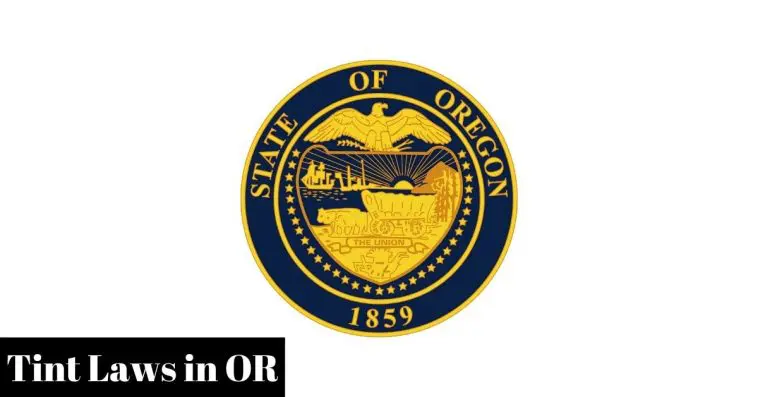People tint windows for various reasons; some do it because of light-sensitive medical conditions such as albinism and psoriasis, while others do it just because they think it’s cool.
Why do it anyway?
Window tinting has its benefits, such as protecting your eyes from the glare of the sun and reducing the interior heat of your car. It may also protect your car’s upholstery from fading due to constant exposure to the sun and conceal what is inside for security reasons.
When tinting is done correctly by a professional, it may hold your windows together and prevent glass shattering in case of an accident.
Different states have different laws pertaining to the percentage of light that a tint can allow, also known as visible light transmission (VLT)
Let’s focus on Oregon window tint laws for now!
TABLE OF CONTENTS
Can You Have Tinted Windows And Windshield In Oregon?
You’re allowed to have tinted windows in Oregon provided you follow the stipulated rules regarding window tint, and you possess a certificate stating your car’s light transmittance and reflectance from your tint installer.
Window tint darkness percentage is determined by the amount of VLT that passes through it. A low rate means that only a little light can pass through the tint.
The darkest tint you can legally apply on your car is 35%, meaning that your car tint should allow a minimum of 35% of light to pass through it. Anything less than that is illegal according to Oregon window tint laws.
Applying a 20 tint means that only 20% of light can pass through the shade. In Oregon, this is below the legal threshold and may get you in trouble with the authorities.
Will You Be Stopped For Tinted Windows In OR?
A police officer can pull you over for tinted windows if they think a crime is being committed behind the windows. If they believe your tint is too dark, they will use a light meter to determine whether the percentage is within the law.
According to the laws, driving a too dark-tinted car is a minor offense and is classified under Class B. You will be charged 360 USD for this but not imprisoned.
How Dark Can Your Window Tint Be In Oregon?
The category of your vehicle determines window tint darkness in Oregon. That being said, the law classifies cars either as passenger vehicles or multipurpose vehicles.
The law defines a passenger vehicle as any low-speed vehicle designed to carry ten people or less.
The category excludes multipurpose cars, motorcycles, and trailers. If your car is a sedan, hatchback, convertible, hardtop, or station wagon, it will fall under this category.
Oregon car tint laws stipulate the following regarding the window tint darkness for passenger vehicles:
- Wind Shield: The law allows you to apply non-reflective tint on the top 6 inches of the windshield.
- Front Side Windows: The front side window tint should allow more than 35% of light.
- Back Side Windows: Backside window tint should allow more than 35% of light.
- Rear Window: The rear window tint should allow more than 35% of light.
Oregon laws define a multipurpose vehicle as a vehicle constructed on a truck chassis, with additional features for occasional off-road operations, and is designed to carry ten people or less.
Cars that fall under this category are-SUVs, RVs, pickups, panel vans, sports utility vehicles, and minibuses.
Pay attention to what tint laws stipulate regarding multipurpose vehicles:
- Wind Shield: Apply a non-reflective tint on the top 6 inches of the windscreen.
- Front Side Windows: Apply a tint that allows more than 35% of light.
- Back Side Windows: For this category, no restriction is applied.
- Rear Window: Any darkness can do.
How Reflective Can Your Window Tint Be In Oregon?
Adding a reflective tint to your car window reduces the sun’s glare and ensures that you don’t strain while driving. The tint also protects the interior of your car and your skin from UV rays.
Oregon state laws only allow a certain percentage of reflective tint depending on your car type and the window in question.
Let’s look at some of this below:
For Passenger Vehicles
If your car can carry less than ten people, the law categorizes it as a passenger vehicle.
Oregon laws stipulate the following regarding reflective tinting:
- Front Side windows: The reflective percentage must not exceed 13% for front side windows.
- Back Side Windows: The reflective percentage must not exceed 13% for backside windows.
For Multipurpose Vehicles
If your car has additional features for off-road operations and is built on a truck chassis, it falls into this category. Vehicles that fall under this category are RVs, SUVs, pickups, and minibuses.
Oregon state laws stipulate the following regarding reflective tinting for multipurpose vehicles:
- Front And Back Side Windows: Oregon state laws stipulate that the reflective percentage for both front side and back side windows must not exceed 13%.
Ways To Have Medical Exemption For Window Tint In Oregon
If you suffer from a light-sensitive condition, Oregon window tint laws allow you to get a tint with a VLT lower than 35%. You can talk to your doctor to write and sign a statement or prescription outlining the medical condition requiring a darker tint.
With this statement, you can apply for a medical exemption, but the vehicle must be registered under your name, legal guardian, or household member. Once you get the authorization, you must carry it in your car if a police officer asks for it.
Conclusion
Getting a car tint can be a good idea to protect your eyes and your skin from the harmful UV rays of the sun.
If you’re thinking about getting your car tinted in Oregon, you should know that car tint laws stipulate that the lowest visible light transmission percentage should be 35%.
The lowest reflective light percentage should be 13%. You should get your tint installed by a licensed installer and get a certificate indicating your car’s light transmittance and reflectance.




